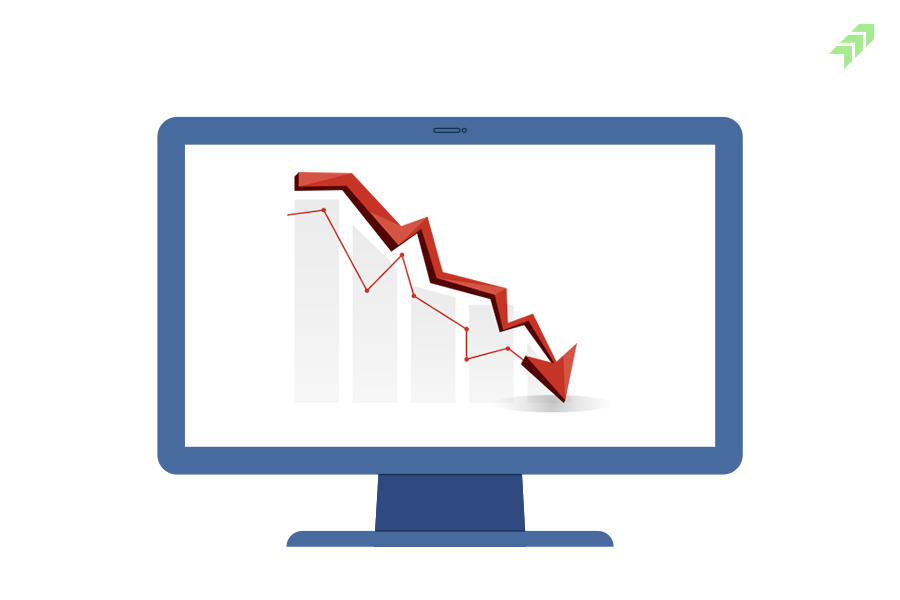In the stock market, apart from cash, there is another segment where huge amounts and volumes of trading take place. Yes, derivatives where future and options contracts are traded in selected stocks (not all stocks) but account huge volume of trades.
In Future & Options (F&O) stocks delivery-based trading is not done, instead, contracts are traded off underlying stocks or main indices. Traders buy or sell in lots that require only margins, not the entire amount, and the contract is expired or squared off before the expiry date of the contract. And when these contracts are signed between buyers and sellers their interest in that stock or underlying index is visible through the open positions.
What is open Interest in Derivatives?
Open Interest (OI) is the number of outstanding contracts between the buyers and sellers at the end of each trading day. It usually shows the total activity in the market and total open futures and options positions in the market that are yet to be closed before or on the day of expiry.
Open interest is built up as many new contracts are formed, but on the other hand, older ones either expired or are exercised then OI declines. The open interest can be seen in only the stocks included in the F&O segment or major indices like Nifty etc.
Nifty Open Interest
The open interest in the Nifty means the number of open potions in the future and options contracts of different strike prices of these underlying indices. The total number of contracts from one side, either buyers or sellers, not the sum of both is counted.
Nifty Open interest tells you how many futures and options contracts are outstanding, in the market. While calculating the open interest, make sure to count either trade. As there are 2 sides to a trade – a buyer and seller, and if the seller sells 1 contract to the buyer, then the buyer entered into the long position and the seller entered into the short position in the same contract known as there is only 1 open interest.
Nifty Open Interest Change
Change is open interest means when a new buyer and seller enter the market and create a new contract. On existing buyers and sellers close their current position into the Nifty F&O contracts, then also Nifty open interest changes.
Sometimes change in Nifty open interest do not get reflected, when the same number of contracts ends and new contracts are created in the same quantity of the same underlying index or stock of the same strike price. OI changes every day with the change in the price of underlying indices or stock in the spot market, resulting change in the price of F&O indices or stock.
Importance of Open Interest
Open interest in Nifty helps to know the activity of the market, if there is no open interest means no open options or all the positions have been closed. Whereas, if open interest is high, it shows many contracts are still open that represents market participants carefully watching the Nifty off course market. OI is a measure of the flow of money through the F&O market.
An increase in open interest means fresh or additional money is supplied into the market, while a decrease in OI indicates money is flowing out of the market.
Change in open interest helps traders to know the market trends and the further movement of the indices predicted when the open interest data is correlated and analyzed with changes in other factors like changes in current and F&O prices.
Nifty Open Interest Data Analysis
Analyzing the Nifty Open Interest Data could be challenging or complicated for new traders or people who newly entered the stock market. Only analyzing the change in open interest is not enough for the actual insight into the market.
Along with open interest, changes in price and volume are also considered to find out how the market is going to move in any direction with more accurate predictions. Let's find out how a change in Nifty's open interest can be analyzed in different situations.
Bullish Trend: When OI in Nifty increases along with rise in the price of the index, the market is considered to be bullish.
Bullish to Bearish: Whereas, when OI decline in Nifty along with the surge in price, the market said to be bullish, but it going to be bearish in near term.
Bearish with Increase in OI: When there is an increase in open interest with the sudden fall in the Nifty price, the market is considered to be bearish where investors likely start selling the stocks or make the short positions.
Bearish with Drop-in OI: Again when open interest decreases, with the decrease in the price, means the market is considered to be bearish.
Falling of the open interest in any particular contract means, the last trend is going to end with the positions are going to square off. When the market is when a rising trend, means bulls are active and when the market falls, bears are active.
In such situations, traders try to exit their positions or reduce their exposure to the future market. In short, I say every trader must follow the open interest in futures and options data to analyse the movement of the market shortly.
How to Check Open Interest in Nifty?
Open interest in the Nifty shows the trend in the market, and a change in open interest in the Nifty can be used to predict the next move of the index. To check the open interest in Nifty there are two areas where you can check the OI in Nifty.
Apart from the future, you can see in the option chain of different strike prices of Nifty. In the option chain, the Call Put Ratio is the important OI tracker that provides the true details about OI and the actual trend of the market helping traders to make the options.
Use the Nifty Put Call Ratio
To check the open interest in Nifty you can analyze the Put Call Ratio (PCR). High PCR means the market is bullish as option writers are more tend to write puts. While on the other hand, if PCR is low, there is bearish sentiment in the market, as option writers are not ready to write puts but instead write calls.
Put Call Ratios is a very important and useful tool to check the open interest in the Nifty. This ratio can be easily calculated by dividing the number of puts traded on a particular day in Nifty future by the number of call options.
As this ratio increases means the investors are putting their money into options rather than call options while the increase in traded put options signals that investors are either speculative that the market will move down or hedging their positions if a sell-off starts in the market.
How Traders Use Change in Nifty OI for Data Analysis?
Traders use the PCR and chart patterns in the Nifty OI to analyse the data for market trends. OI analysis provides very useful insights relating to market trends with its support/resistance. OI data in a particular strike price of Nifty gives very useful data to determine the support and resistance of the Nifty.
Suppose Nifty 17000 PE has the highest open interest, traders are considering the levels the most important support for the current expiry. Using such trends in OI, traders or institutional investors, write options rather than buy. Similarly, when open interest is built up in the 17500 calls, it means there is a major resistance zone and if expiry is about to arrive then the market is likely to remain in the range bound between these two levels.
Wrapping Up
Before we end this discussion about Nifty's open interest, let’s review about open interest. The OI in Nifty or any other indices or individual stock can provide very useful insights about the market trend. It helps to know the market sentiments, interest and liquidity. Moreover, it also helps to find out the momentum opportunities to take the right decision while making the positions in the stocks or future and options.
And using the combination of change in OI and price change can give you meaningful results. Expert traders can use it as a very crucial market indicator and become very effective when used with other technical indicators and other stock screener technical analysis tools. Even, if you are going to trade in F&O segments you should understand the OI better.
Also Read: Stock Screener Technical Analysis Scanner



















No comment yet, add your voice below!